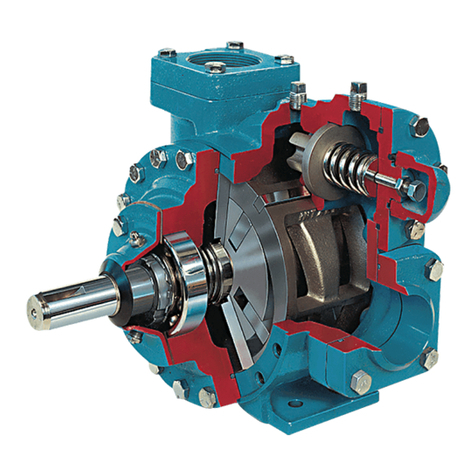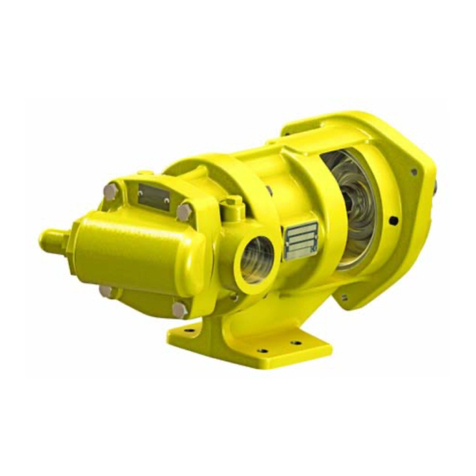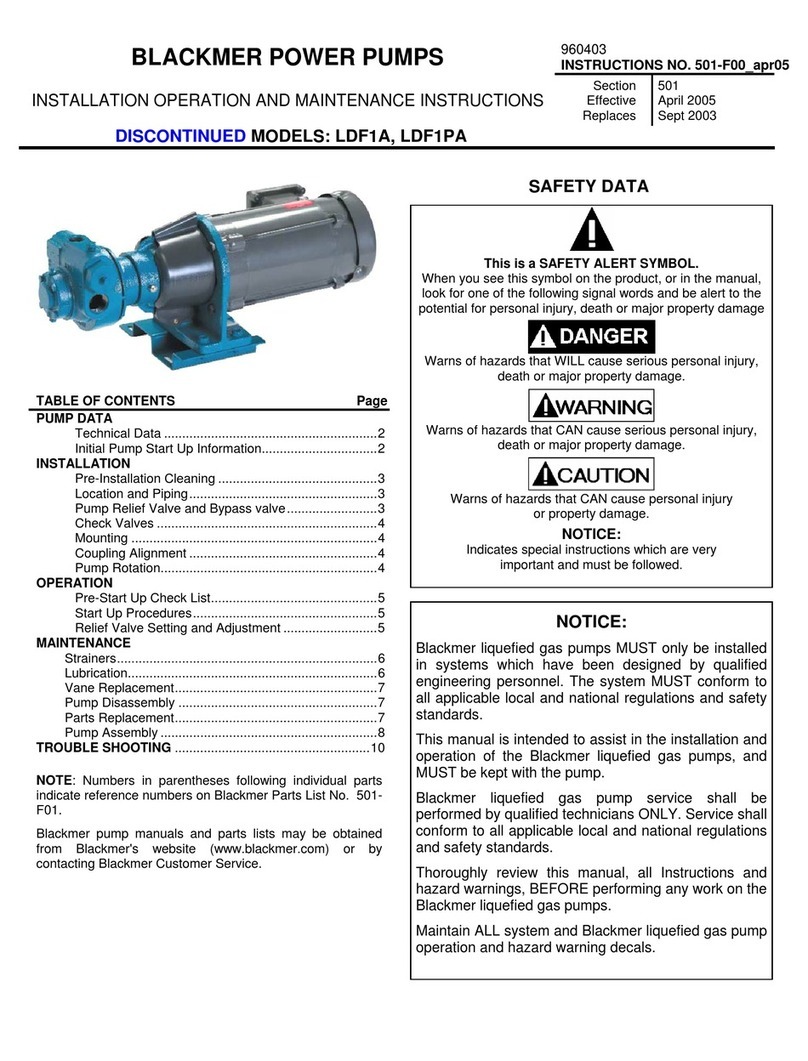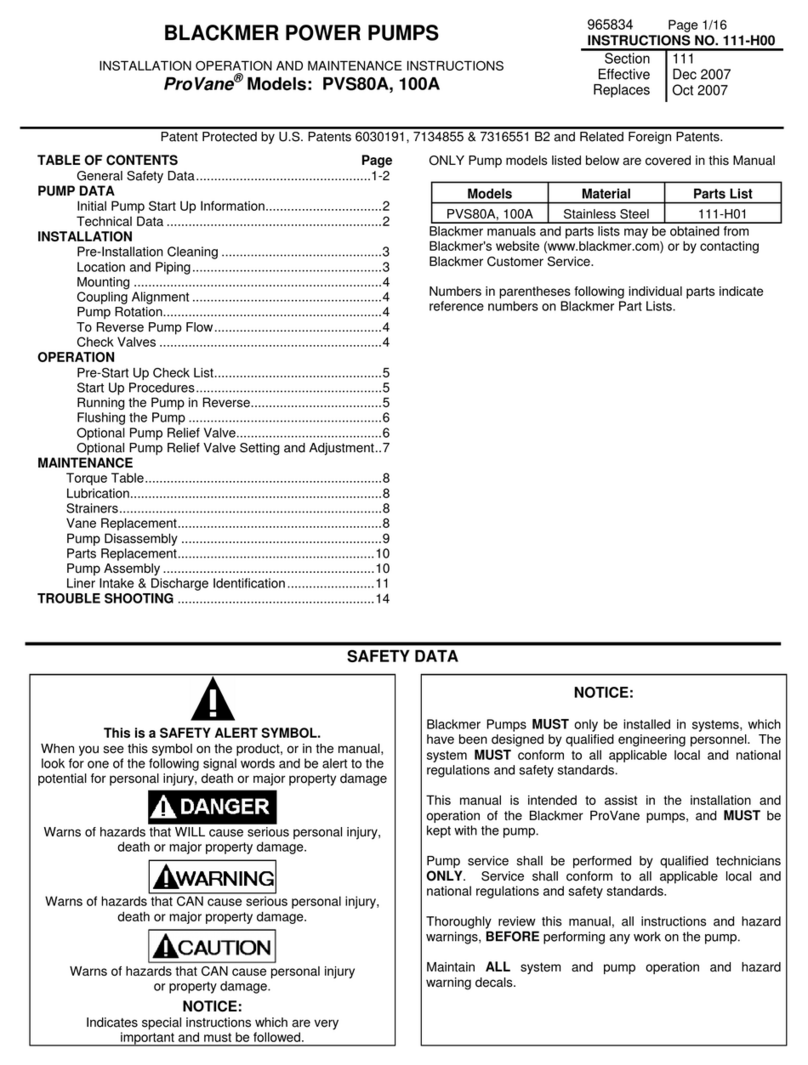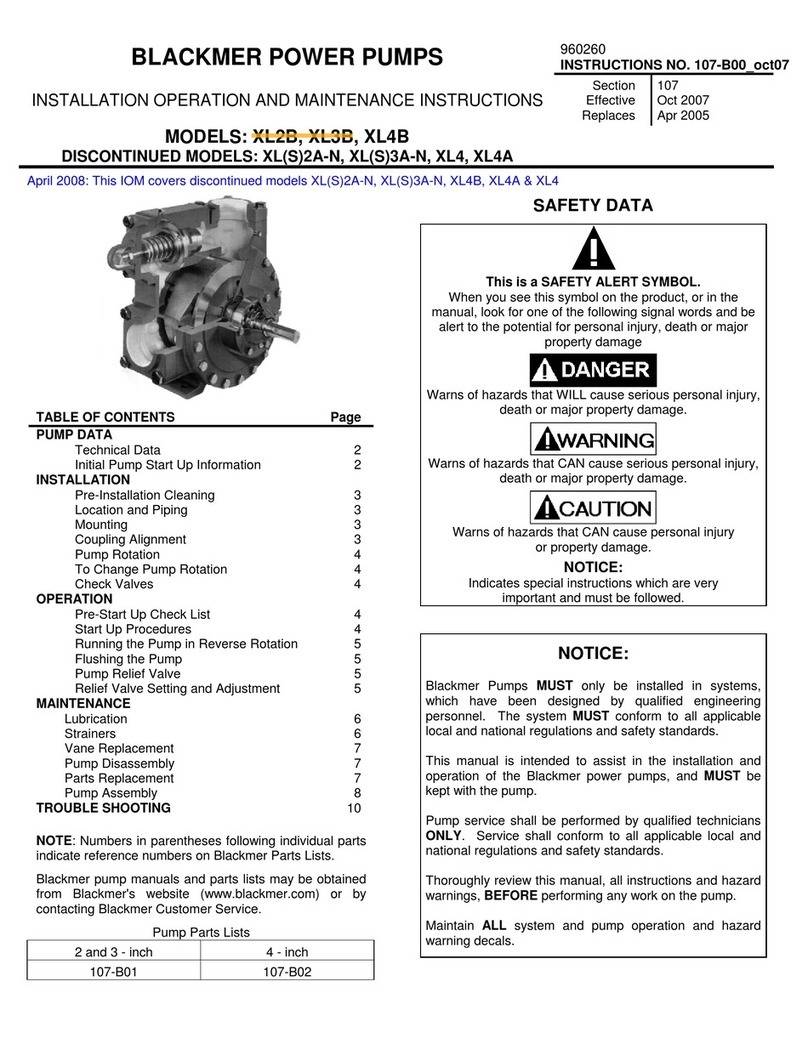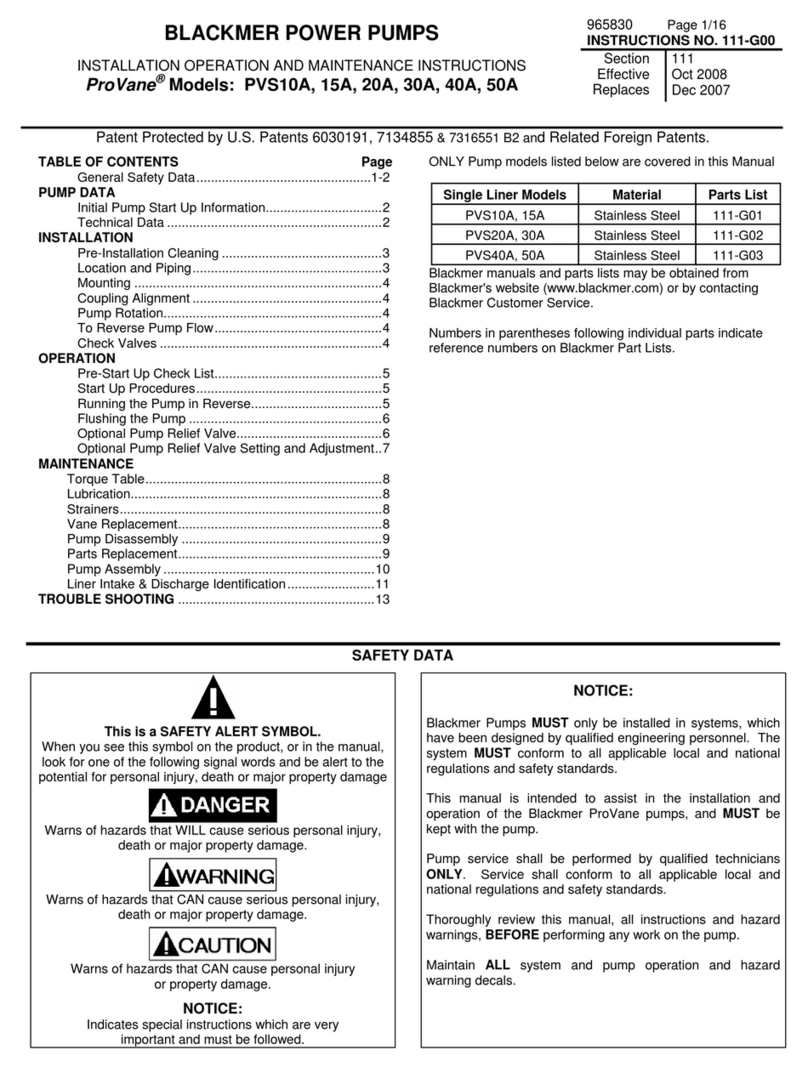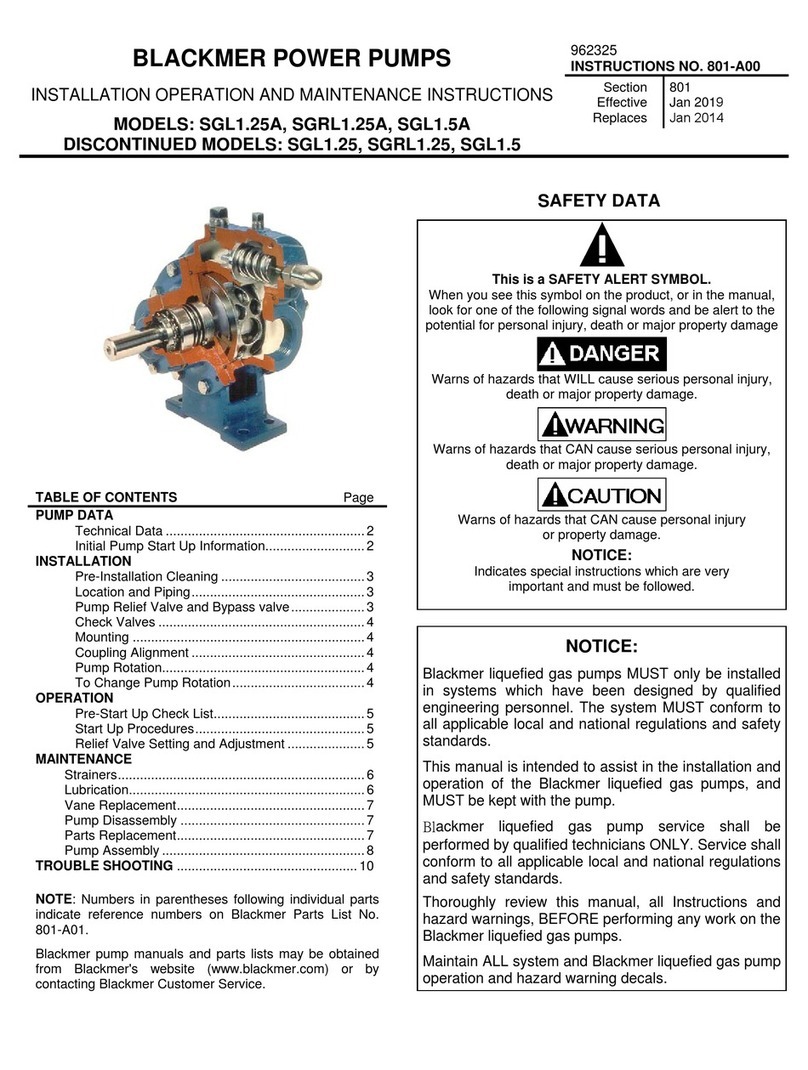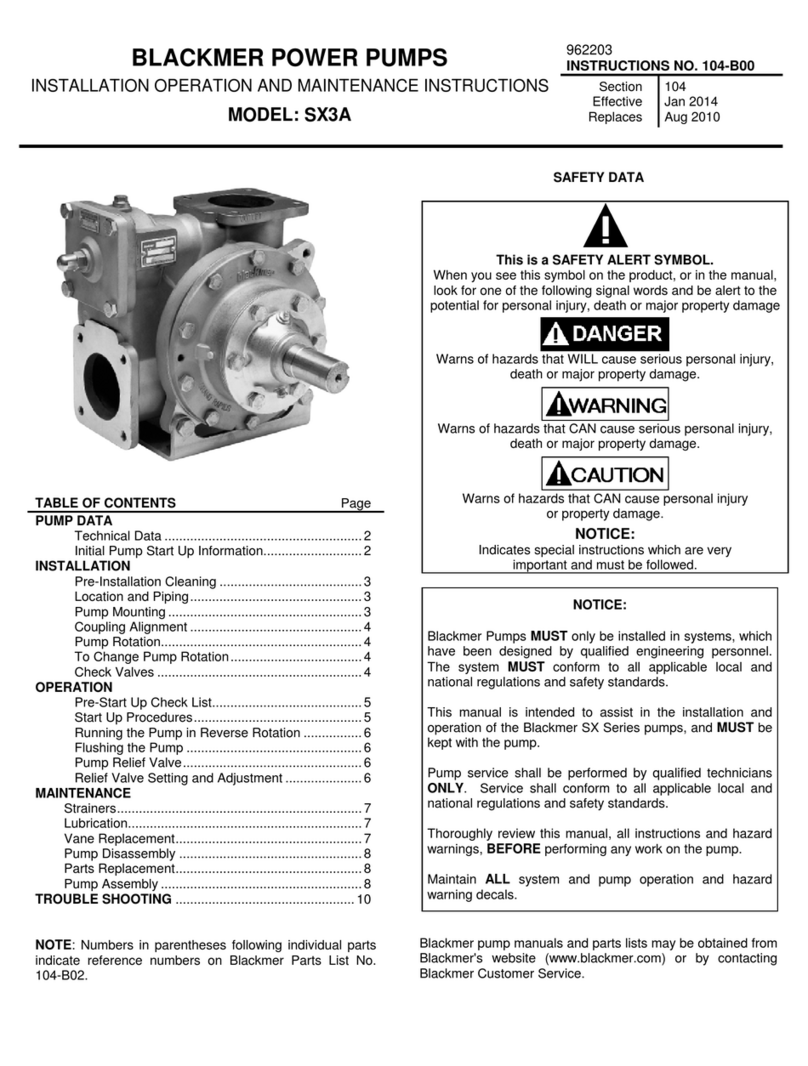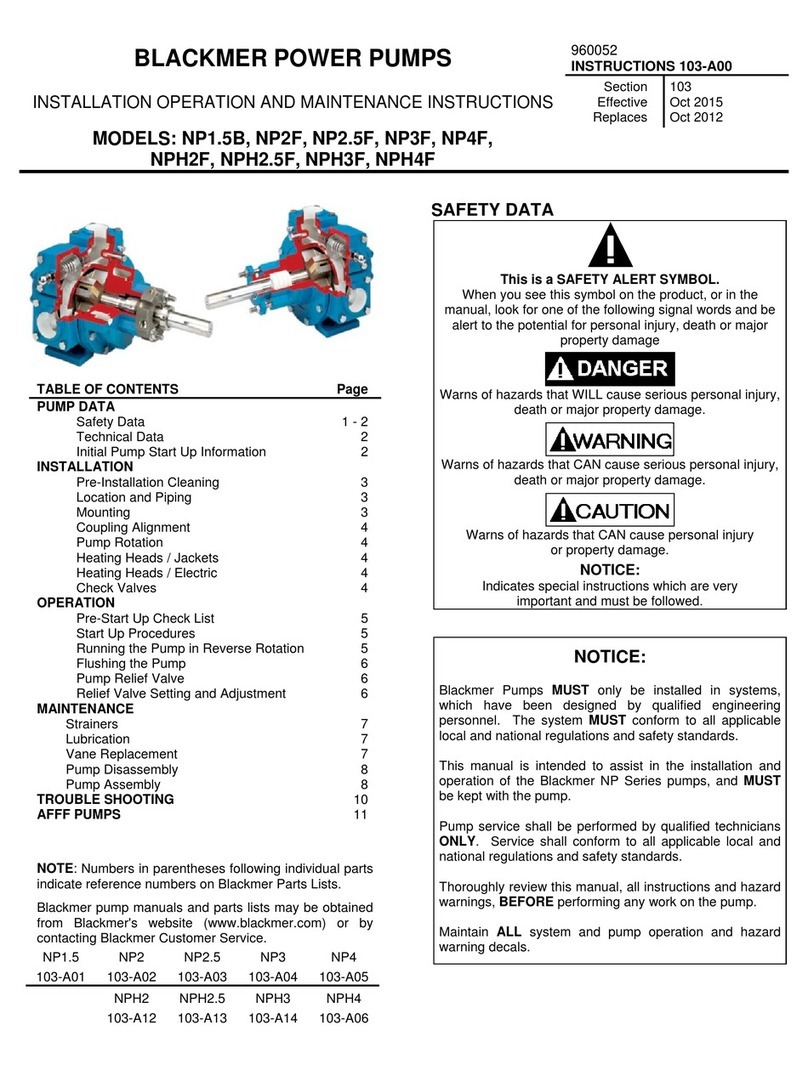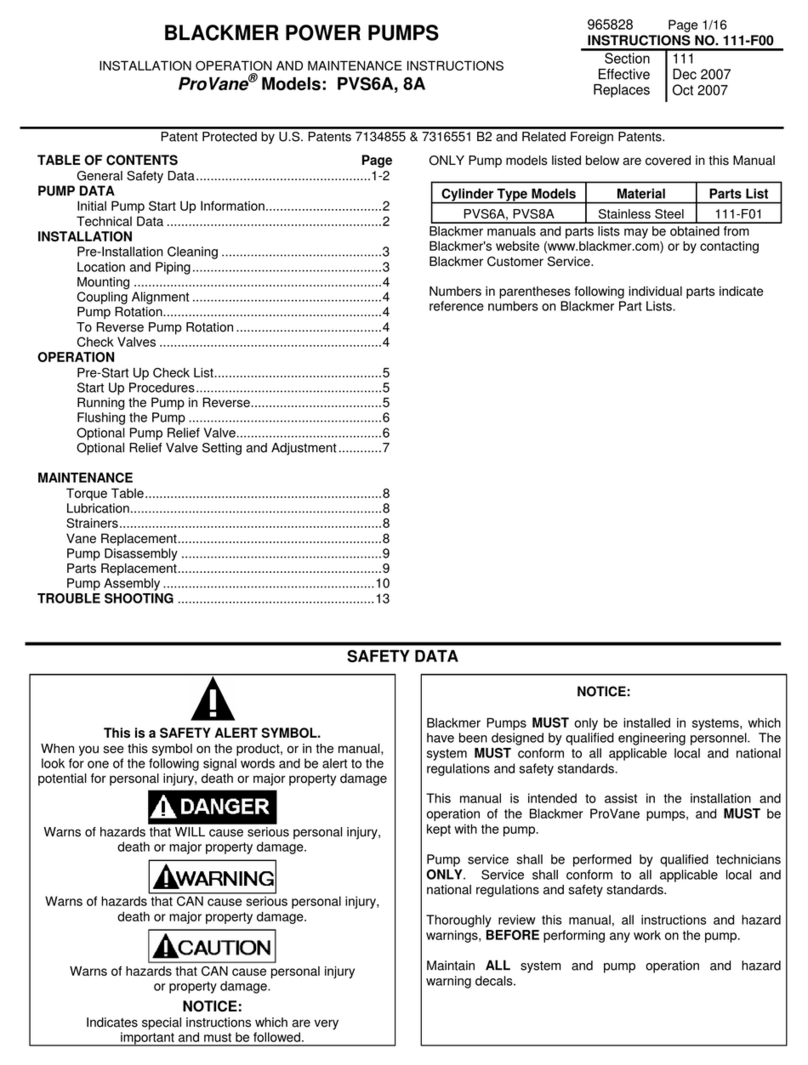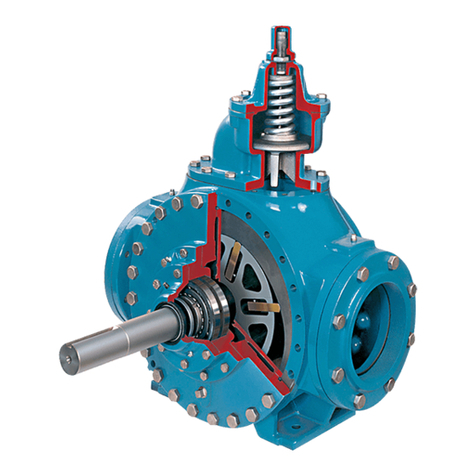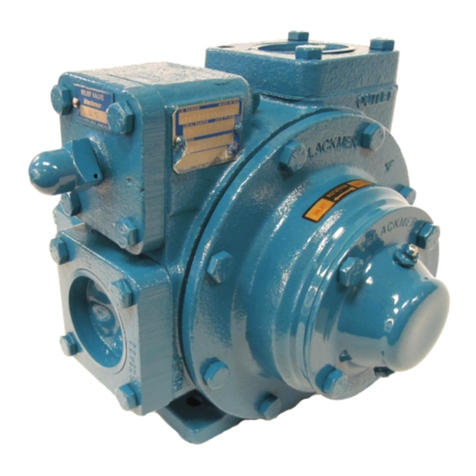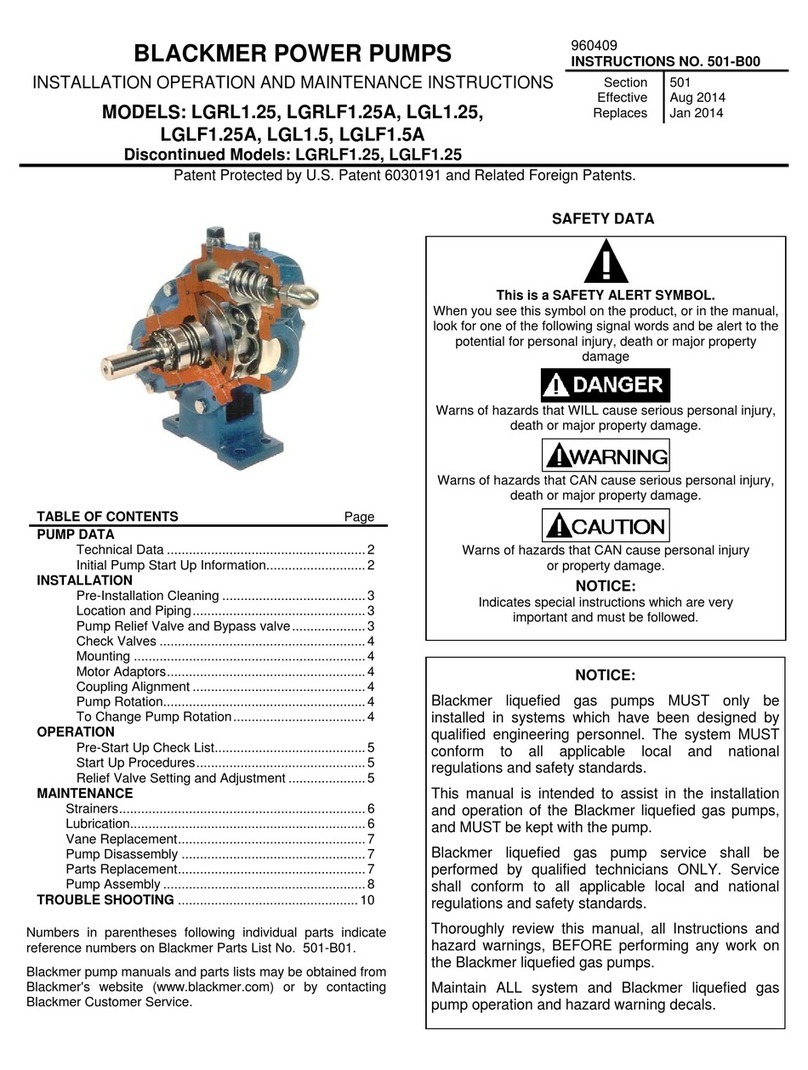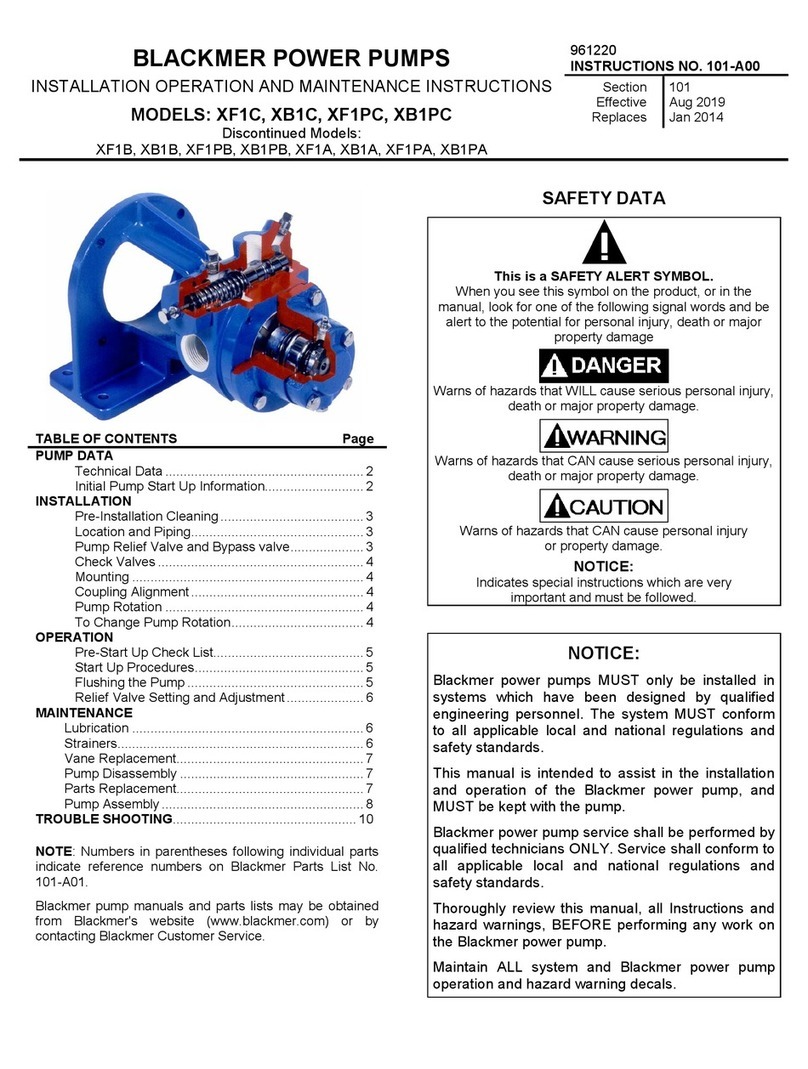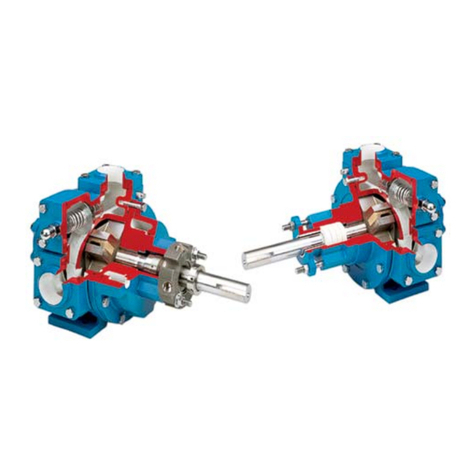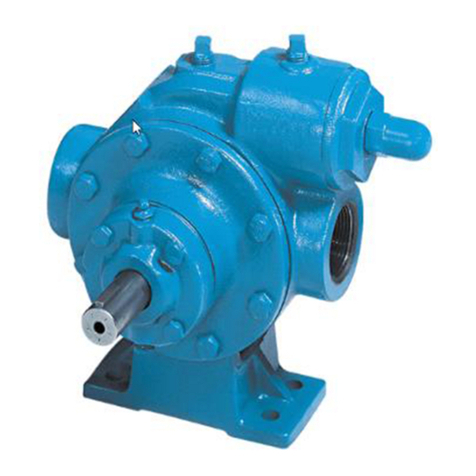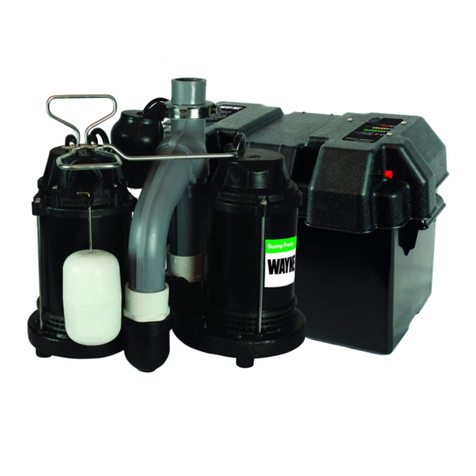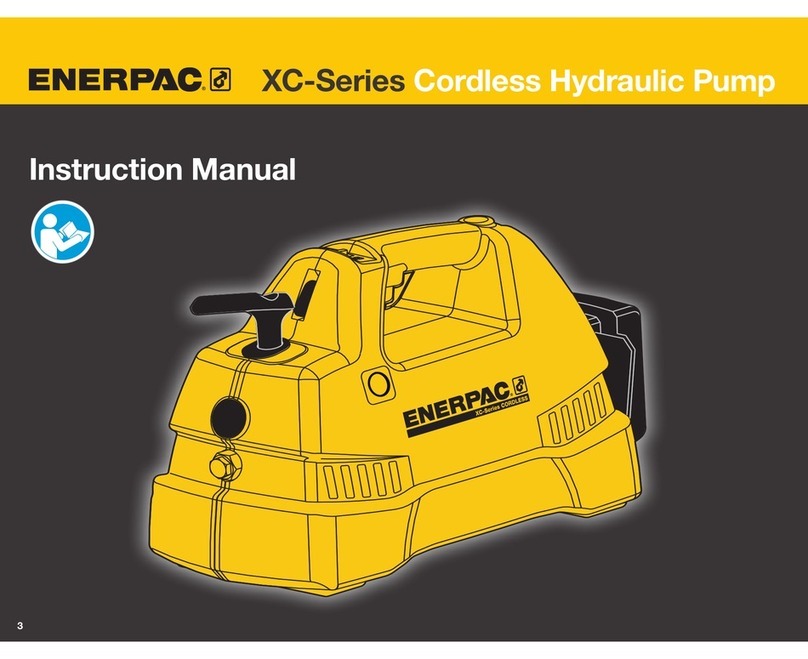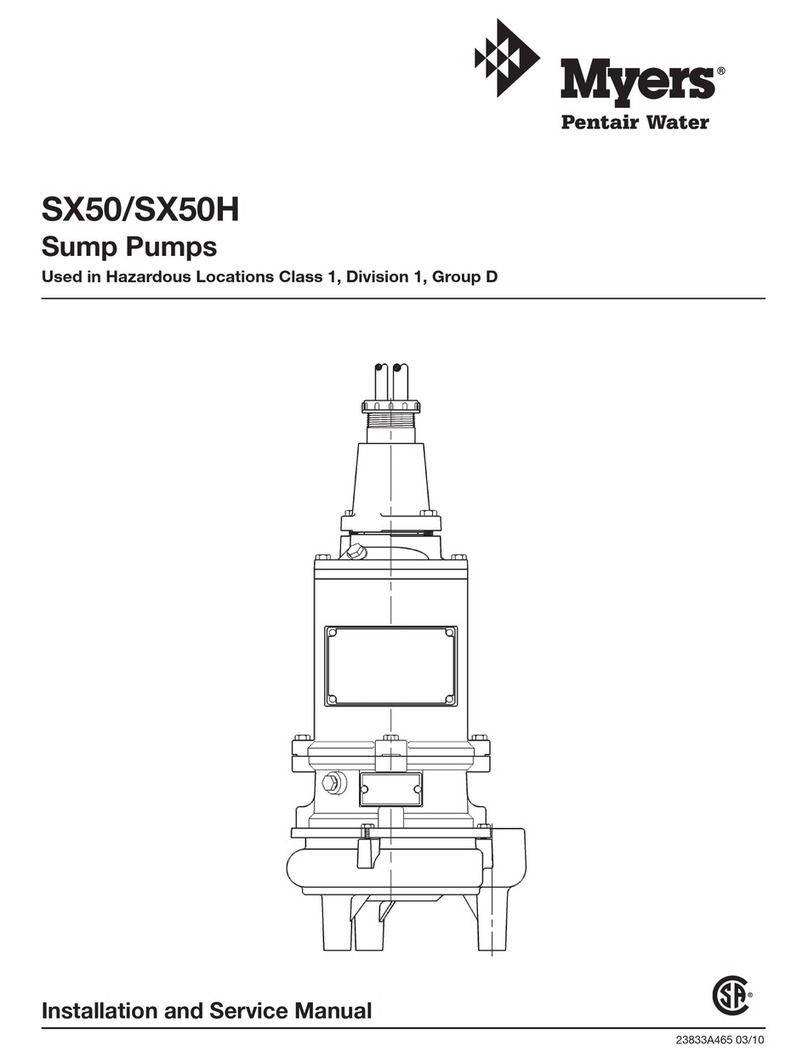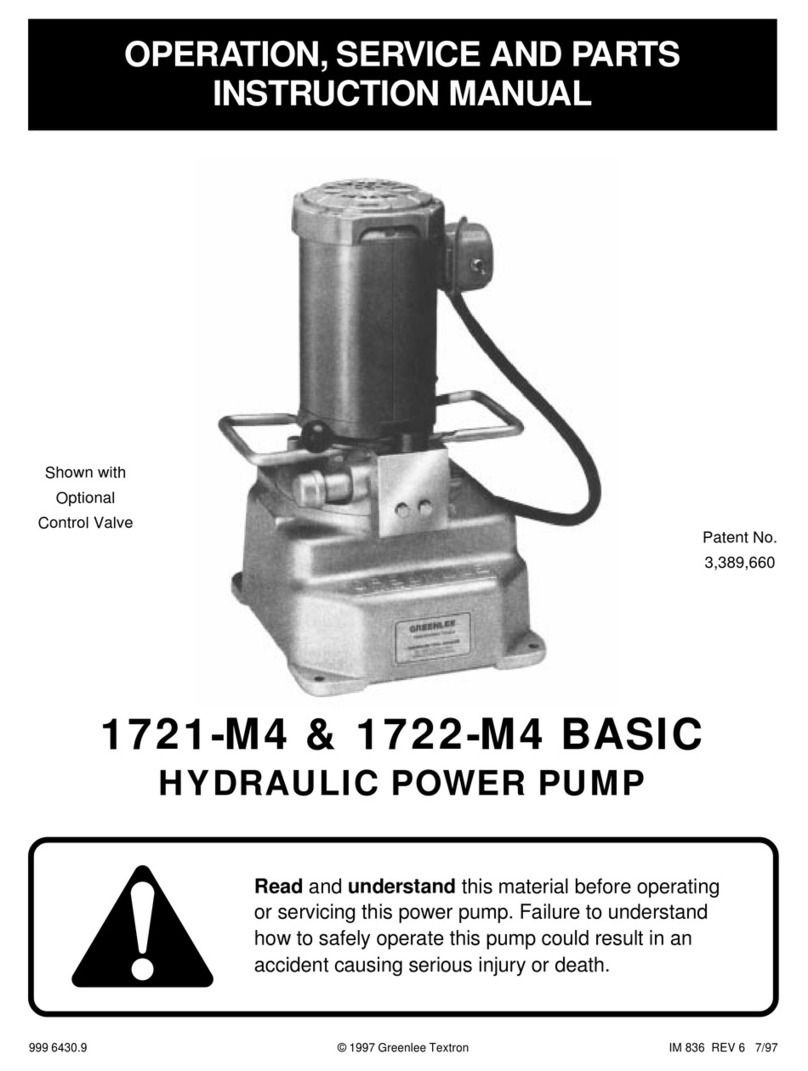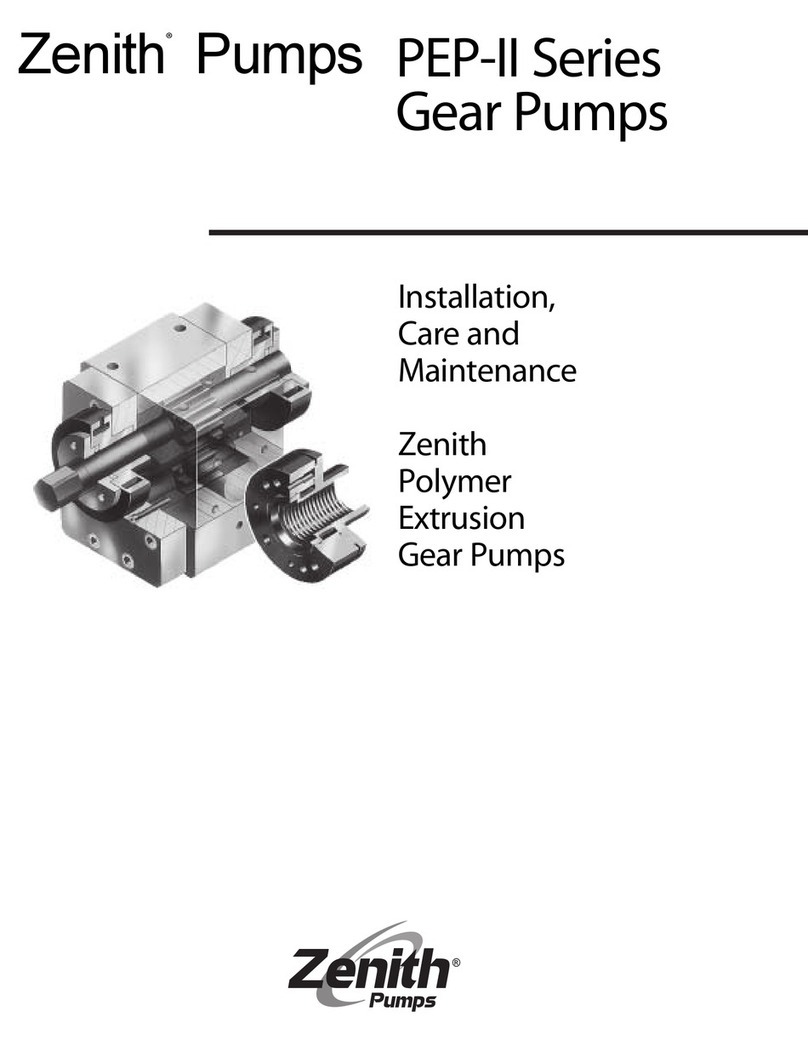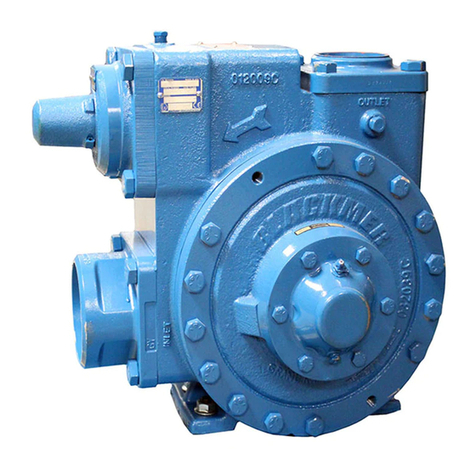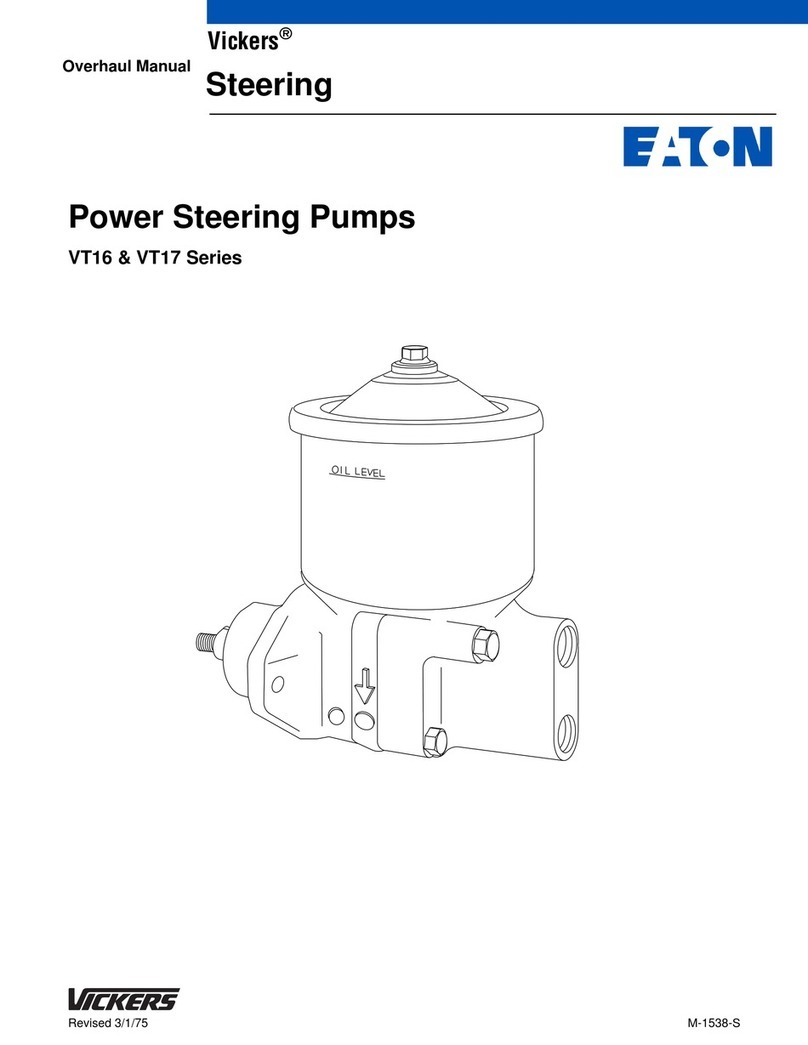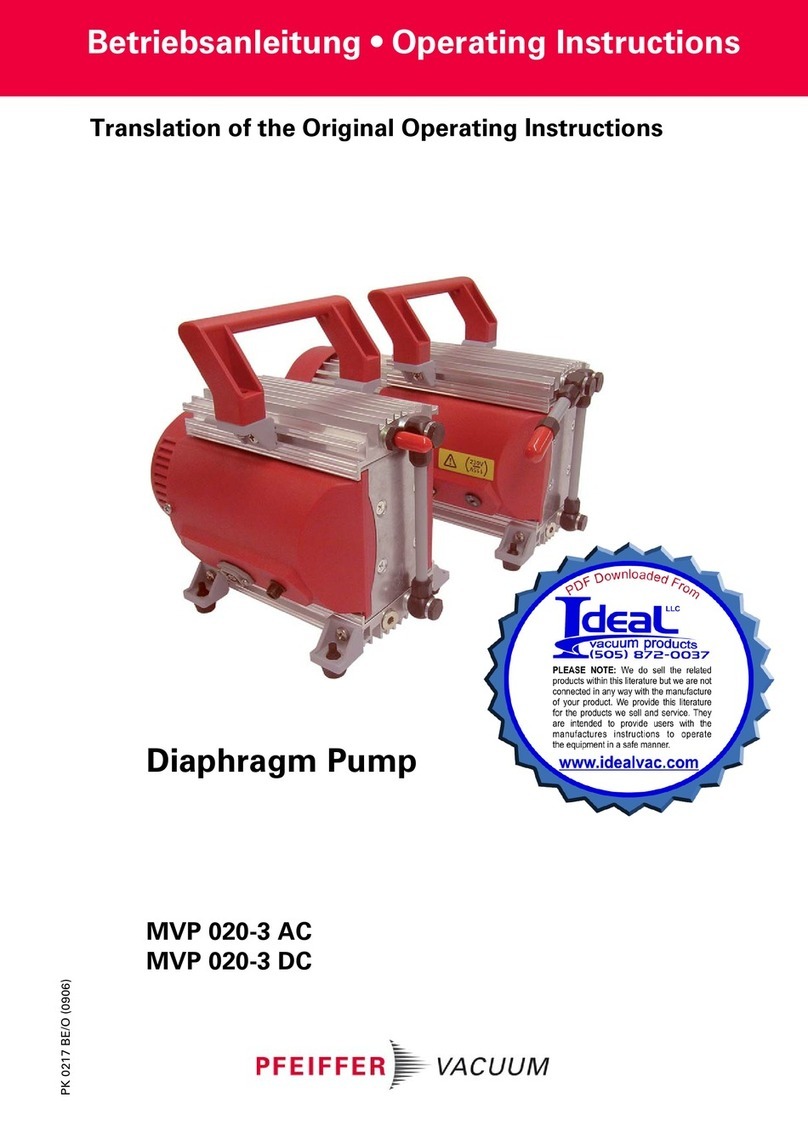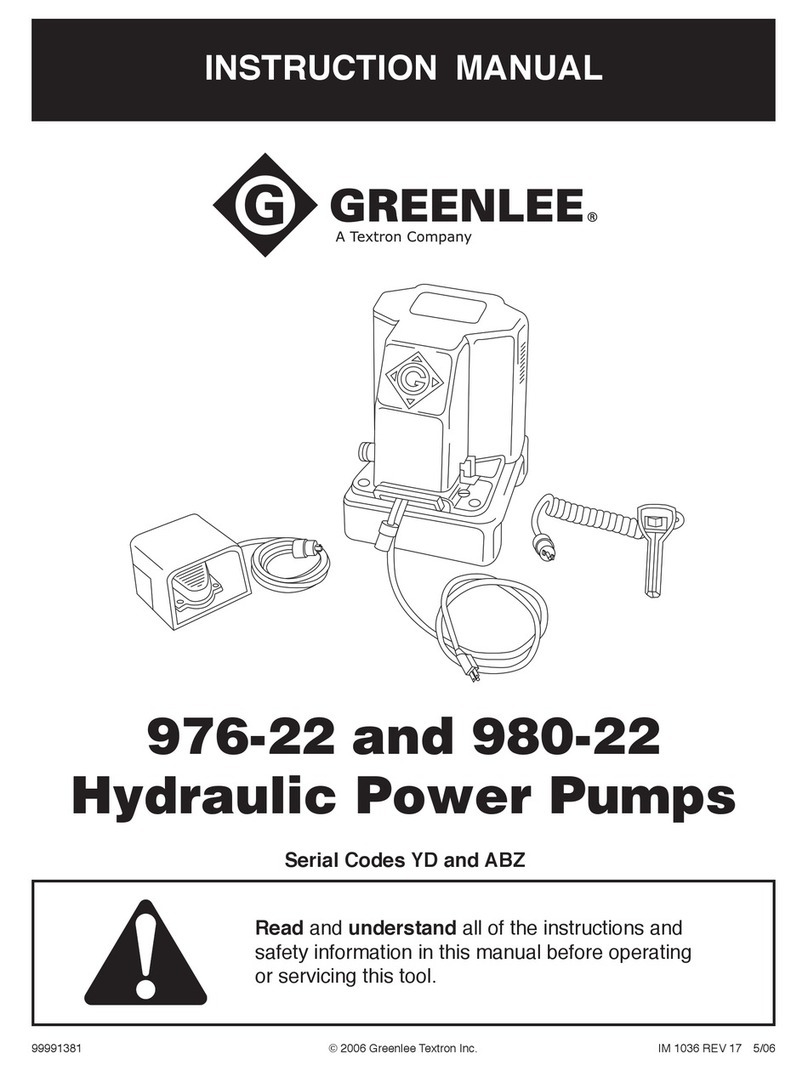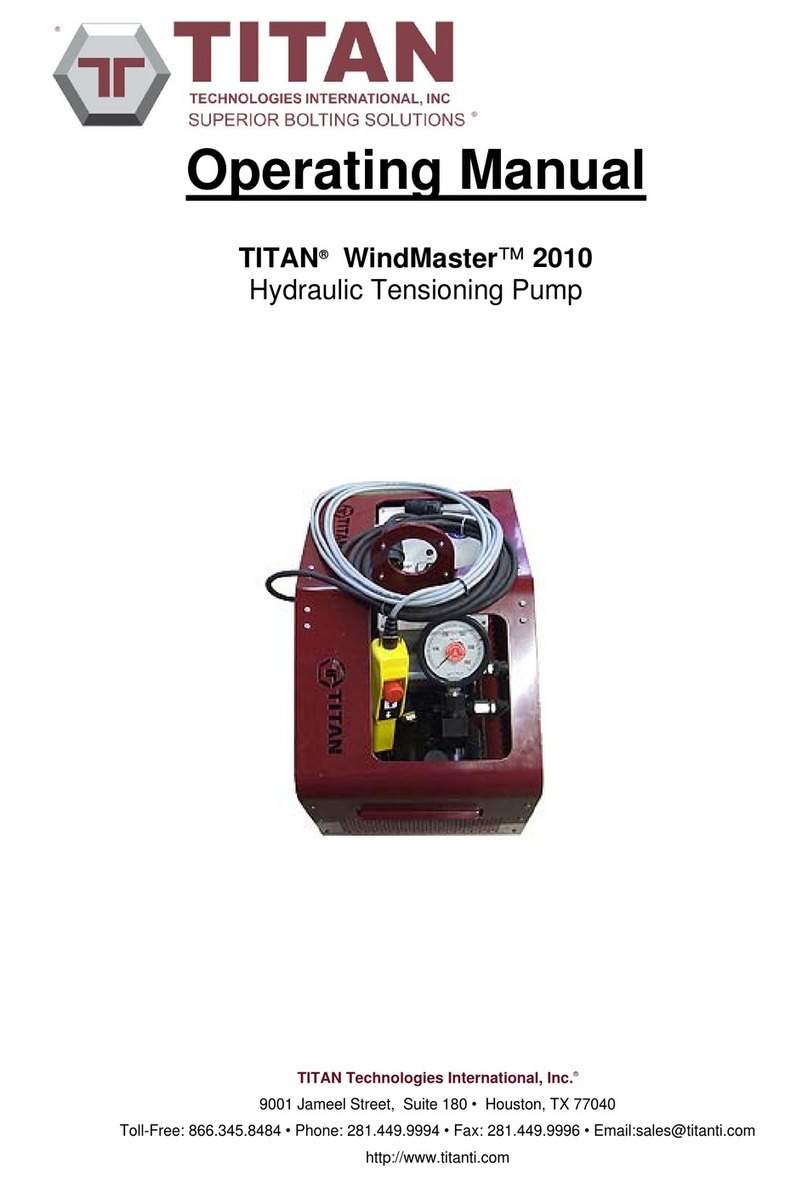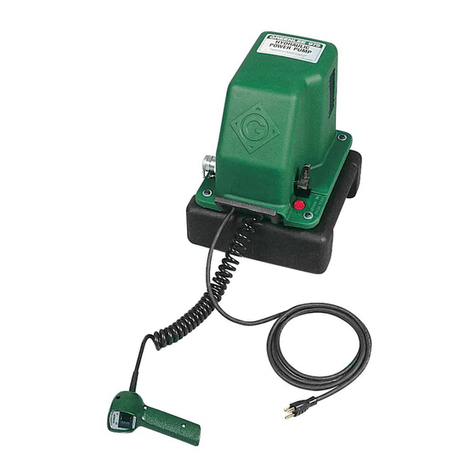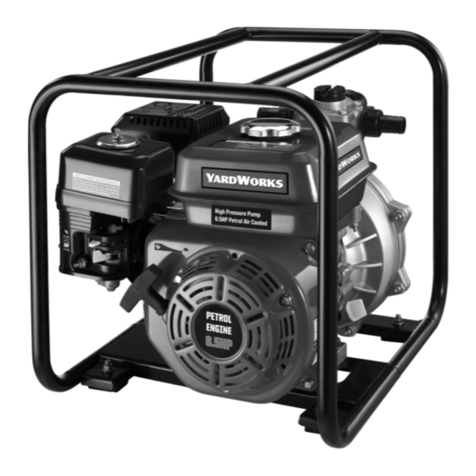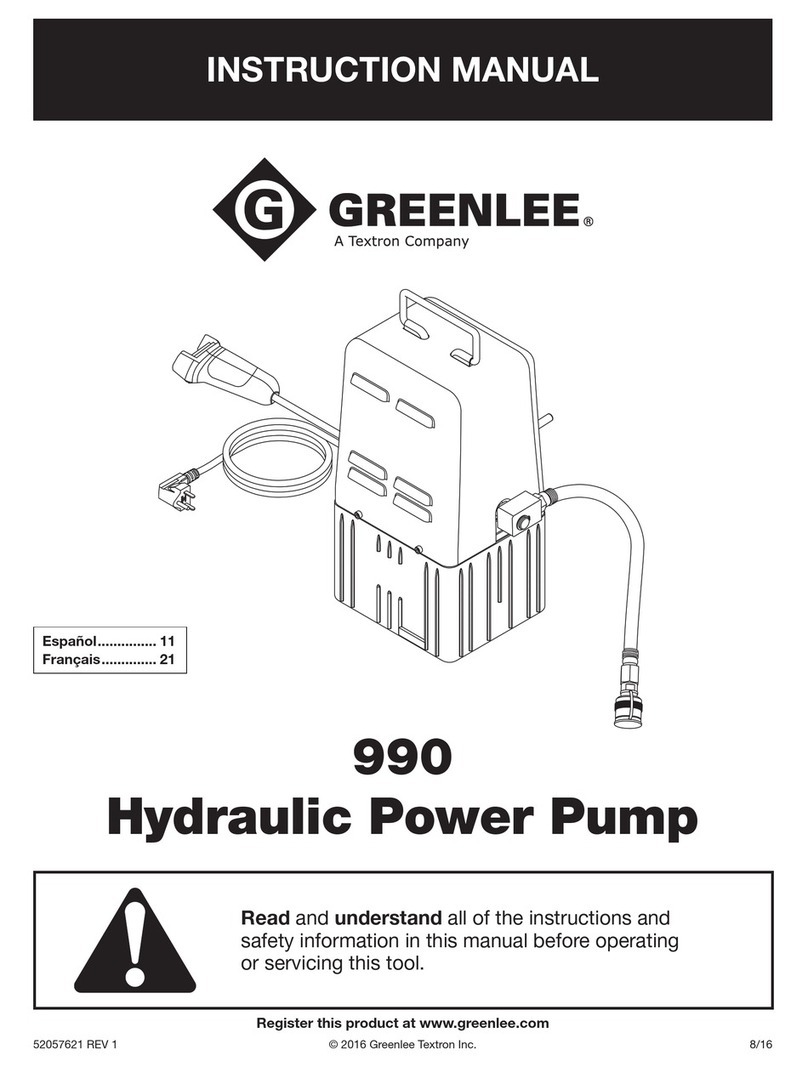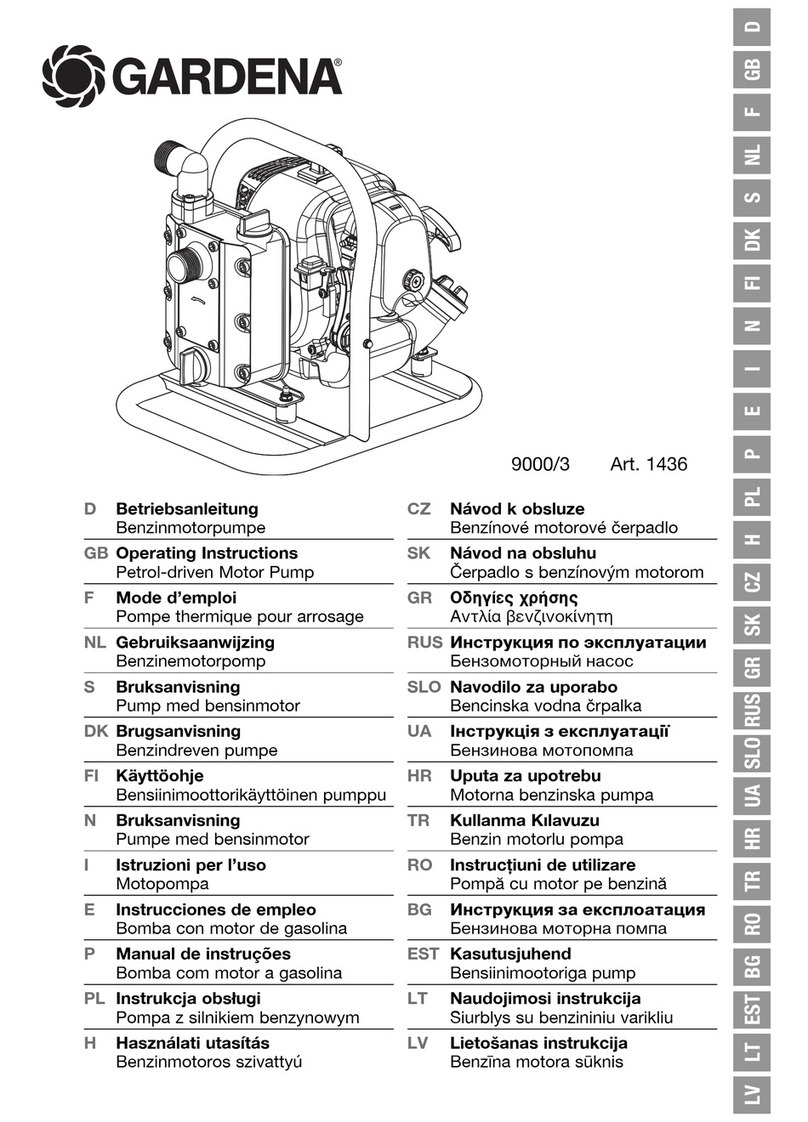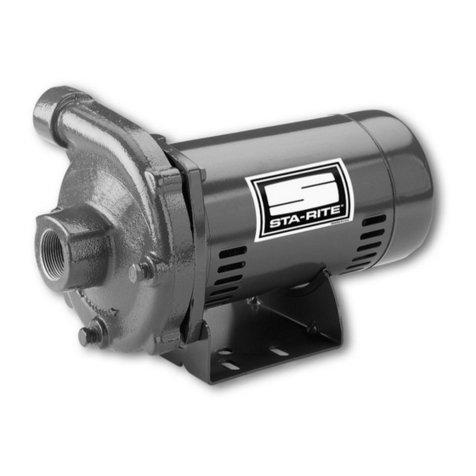
102-A00 page 10/16
MAINTENANCE
VANE REPLACEMENT AND/OR
COMPLETE PUMP DISASSEMBLY
NOTICE:
Follow all hazard warnings and instructions provided in
the “Maintenance” section of this manual.
Always use a lifting device capable of
supporting the full weight of the pump
assemblies.
Heavy assemblies can
cause personal injury
or porperty damage.
NOTICE:
Use a hoist and appropriate sling or lifting lugs attached
to the baseplate to lift the entire pump assembly.
Eyebolts attached to the pump, gearbox, or motor must
be used to lift that particular component only.
NOTICE:
Use a hoist and eyebolts installed in the threaded holes
located in the heads, discs, rotor and casing to lift the
heavy pump parts.
Note: If a seal or vanes are to be replaced, the pump may
be left in the upright position. If the rotor-shaft or liner is
to be removed, the pump will have to be placed on its
side for some operations.
1. Flush the pump per instructions in this manual. Drain
and relieve pressure from the pump and system as
required. A 3/4" drain plug (29) is fitted in each head.
2. With the pump upright (shaft horizontal). Clean the
pump shaft thoroughly, making sure the shaft is free of
nicks and burrs. This will prevent damage to the
mechanical seal when the inboard hub or head assembly
is removed.
3. Remove the inboard bearing cover capscrews (28) and
slide the inboard bearing cover (27A) and gasket (26) off
the shaft. Discard the bearing cover gasket.
4. Removing the locknuts and lockwashers (24A and 24B):
a. Bend up the engaged lockwasher tang and rotate the
locknut counterclockwise to remove it from the shaft
b. Slide the lockwasher off the shaft. Inspect the
lockwasher for damage and replace as required.
5. Move to the outboard side of the pump and remove the
outboard bearing cover capscrews (28) and slide the
outboard bearing cover (27) and gasket (26) off the shaft.
Discard the bearing cover gasket.
6. Bend up the engaged lockwasher tang and tighten the
locknut (24A) on outboard end until shaft cannot be
rotated by hand. This will ensure proper rotor/shaft (13)
alignment during reassembly.
7. Return to the inboard side of the pump and wrap the
shaft threads with tape to ensure that grease seal (104A)
is not damaged upon hub removal.
8. Remove the capscrews (21A) from the inboard hub
(20C) and slide the hub assembly off the shaft. The
bearing (24), grease seal carrier assembly (104B, 104A
and 104C), stationary seat (153B) and stationary O-ring
(153D) of the mechanical seal will come off with the hub.
a. Pull the bearing (24) and grease seal carrier
assembly (104B, 104A and 104C) from the housing in
the hub.
b. If worn or damaged, remove the grease seal (104A)
from the carrier (104B).
c. To remove the mechanical seal stationary seat
(153B), remove the seal retaining screws and
washers (153Q, 153R). Gently push the backside of
the stationary seat from the seal recess. Place a cloth
under the seal to avoid damage. Be careful not to
contact the polished face of the seal during removal.
Remove and discard mechanical seal stationary O-
ring.
9. Remove the remaining mechanical seal parts, including
the seal spring holder, springs, retaining ring, rotating O-
ring and face (153G, 153H, 153N, 153L, 153F) from the
shaft sleeve (154) by removing capscrews (153J).See
Figure 6. Take care to protect the carbon rotating face
from damage during disassembly. Remove and discard
rotating O-ring.
10. Inspect shaft sleeve (154A). If replacement is
necessary, remove capscrews (155), set aside. If
necessary, use seal mounting holes as jackscrew holes
to assist disassembly. See Figure 7 Discard stationary O-
ring (154B).
11. To install new shaft sleeve (154A):
a. Lubricate inner O-ring (154B) using bearing grease
identified in lubrication section of this manual. Install
sleeve over shaft while aligning mounting holes with
corresponding threaded holes in rotor. Sleeve should
mount flush with rotor
b. Place small amount of Loctite # 220 onto capscrews
(155), thread fully into rotor holes through sleeve.
Torque to 200 inlbf (22.6 Nm).
12. Remove the head capscrews (21). If necessary, place
head capcrews in the two tapped holes near the outer
rim of the head and tighten until the head separates from
the casing. Use a hoist to remove the head from the
casing, being careful not to damage the shaft.
13. Remove the head O-ring (72) and disc (71). If needed,
threaded holes are provided in the disc to break it free.
14. Remove the top vane then rotate the shaft by hand to
bring the next vane to the top until all the vanes have
been removed. If the vanes are swollen or jammed in
their slots, the rotor-shaft must be removed.
15. If doing a vane-only replacement, skip to step 10 of
COMPLETE PUMP ASSEMBLY section of this manual
for pump reassembly
16. If full pump disassembly required, loosen and remove
outboard locknut (24A) and lockwasher (24B).
17. Set the pump on its side (shaft vertical) with the shaft
pointing up.
18. Attach a hoist to rotor-shaft, lift it out and set it aside.
The pushrods, and rotating portions of the seal will come
out with the rotor-shaft..
19. Set the pump upright (feet down).
20. Remove the outboard head components as described for
the inboard side in steps 7-12.
21. Attach a hoist to the liner. Use a block of wood or piece
of brass against the end of the liner, and drive the liner
out of the casing with a hammer by tapping the outside
diameter of the liner.
